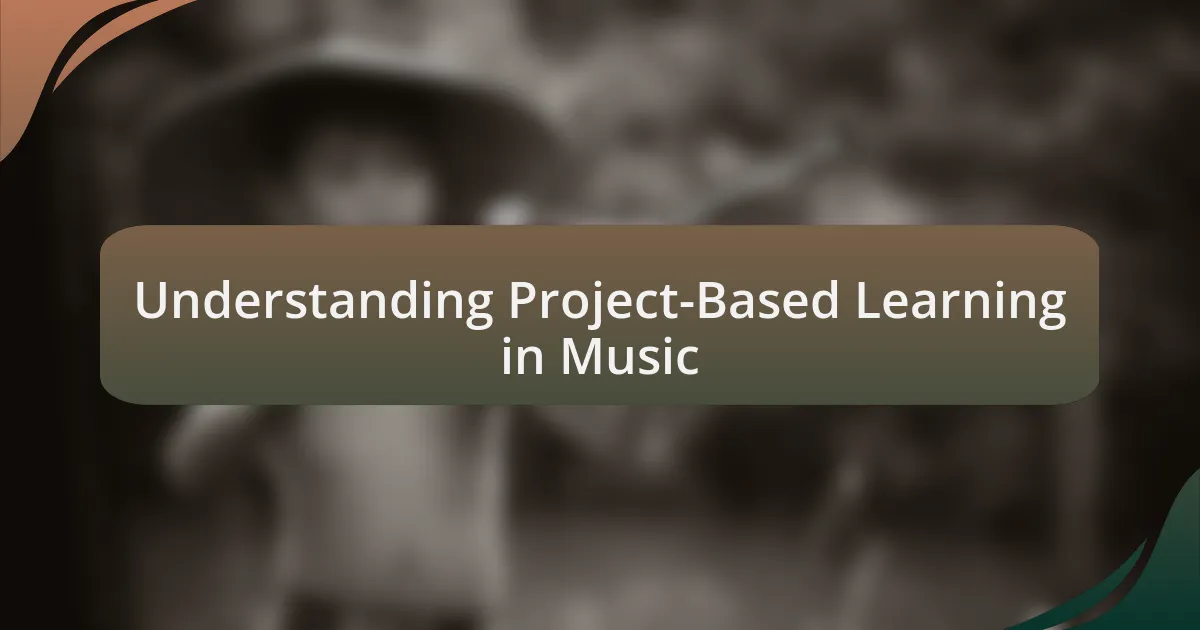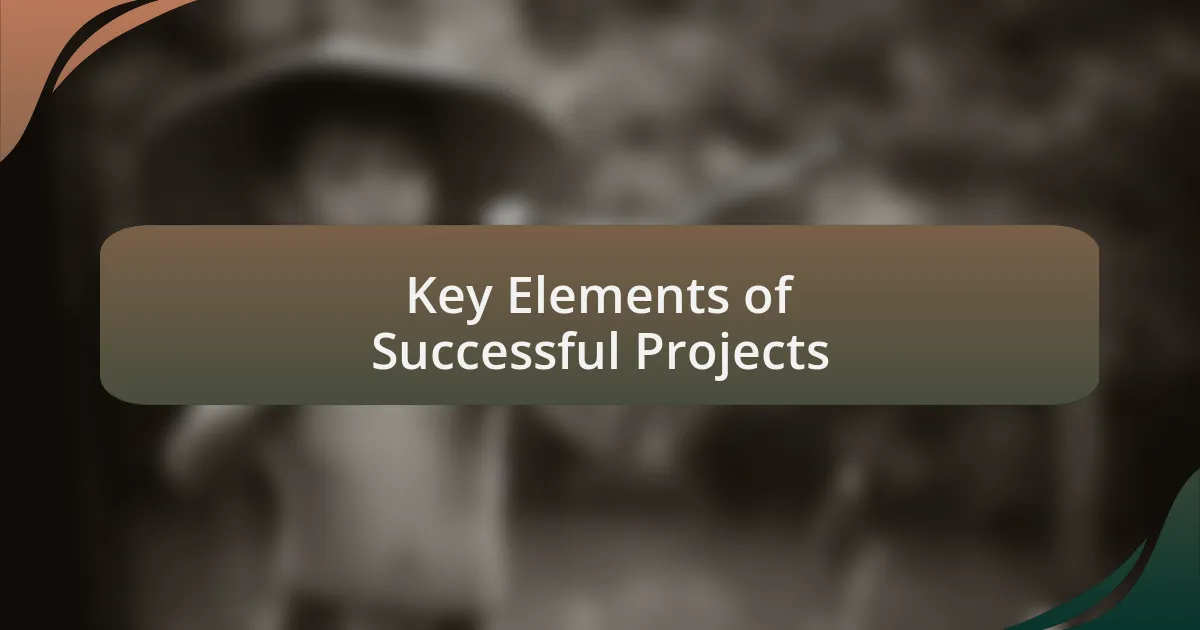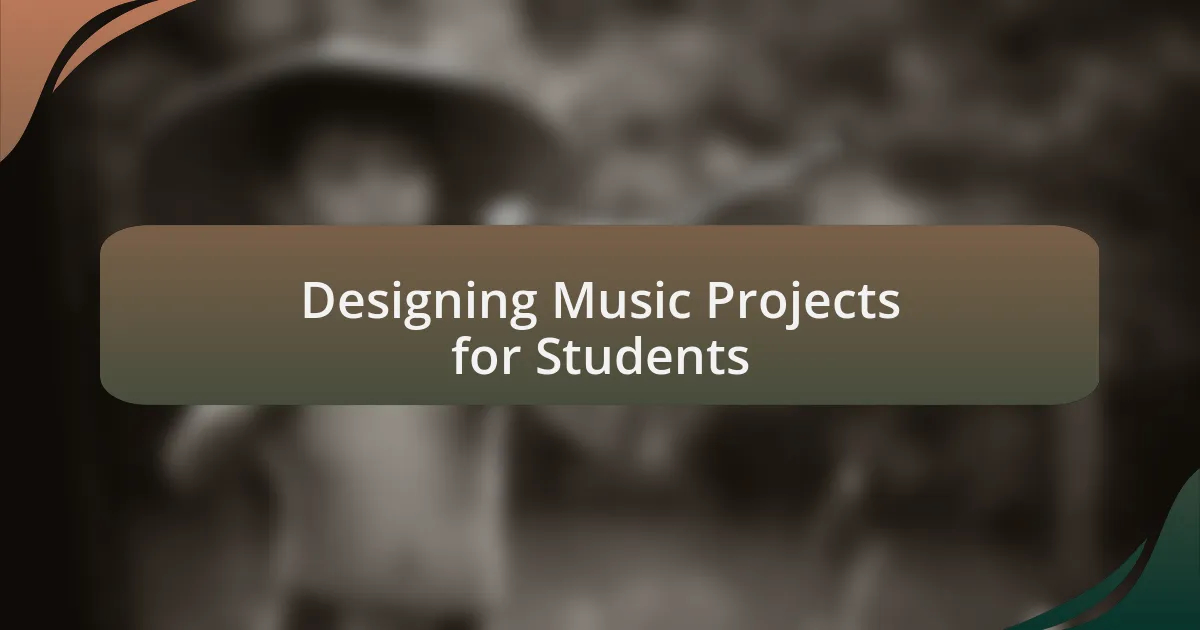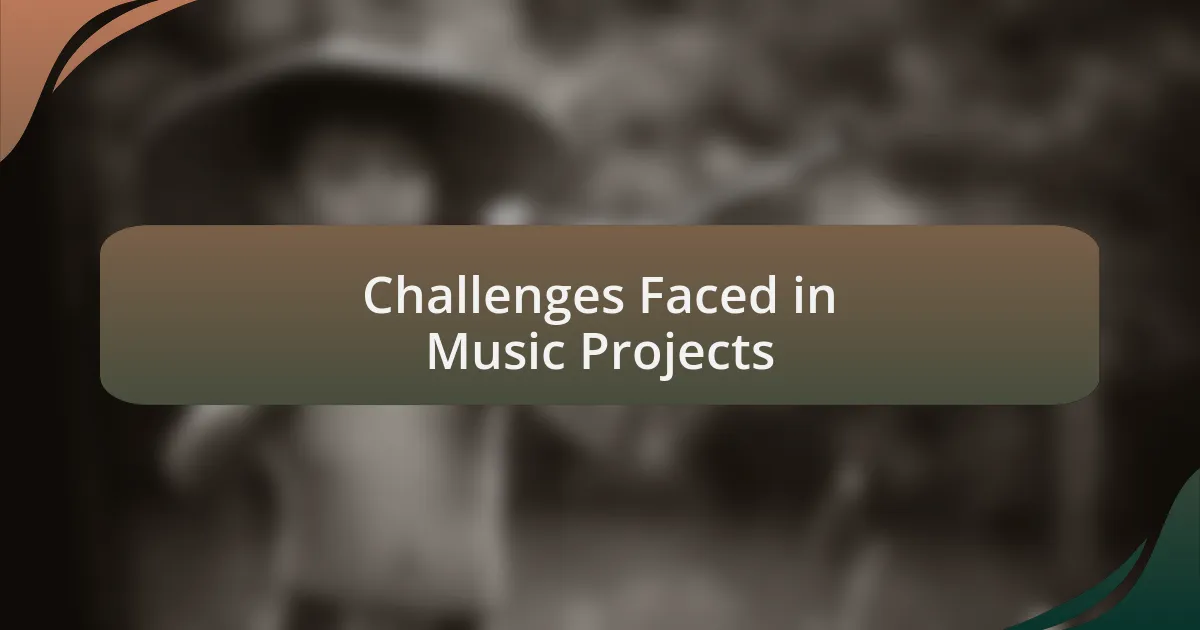Key takeaways:
- Project-Based Learning (PBL) fosters creativity and teamwork, as it reflects real-world experiences in music education.
- Clear goals, effective collaboration, and reflection are essential elements for successful music projects.
- Integrating technology and giving students ownership enhances creativity and engagement in their projects.
- Challenges such as communication issues, time management, and resource limitations can lead to innovative solutions and growth.

Understanding Project-Based Learning in Music
Project-Based Learning (PBL) in music education transforms the way we engage with musical concepts and skills. I remember working on a group project where we composed an original piece, and it was exhilarating to see our ideas transform into a performance. This approach to learning fosters creativity and teamwork, essential qualities in any musician’s journey.
One of the most compelling aspects of PBL is how it mirrors real-world experiences. When I collaborated with peers to plan a music event, we had to manage everything from promotions to logistics. It was a real eye-opener to understand that music isn’t just about playing notes; it’s also about communication and collaboration. Have you ever considered how much more meaningful your learning could be if you were actively involved in the process?
Through PBL, students often develop a deeper connection to the music they create, as they’re not just passively absorbing information. I felt an incredible sense of pride when our composition received applause at a local showcase. It made me appreciate the hard work and the creative journey, highlighting the value of taking ownership at every step. How can we harness that sense of ownership to inspire the next generation of musicians?

Key Elements of Successful Projects
Successful projects hinge on clear goals and objectives. I recall a music project where our first step was to define what we wanted to achieve with our composition. We set specific targets, like incorporating diverse styles and themes. This clarity helped guide our creative process and kept everyone focused and motivated. Have you ever experienced the difference that having a clear vision can make in a collaborative project?
Another element that stands out to me is the importance of collaboration and communication among team members. During one project, we faced a significant challenge when our ideas clashed. However, by maintaining an open dialogue, we were able to merge our different viewpoints and discover a unique sound. This experience taught me that respectful communication can turn potential conflicts into creative breakthroughs. Can you think of a time when a simple conversation changed the direction of your work?
Lastly, reflection plays a crucial role in successful project-based learning. After completing our music event, our group gathered to discuss what went well and what could be improved. This process not only enhanced our future projects but also deepened our appreciation for each other’s contributions. I believe taking the time to reflect can significantly enrich one’s learning experience. How often do you find yourself reflecting on your projects to enhance your growth?

Designing Music Projects for Students
Designing music projects for students is about tapping into their individual creativity while fostering collaboration. For instance, in one project, we chose to create original compositions based on different cultural influences. I was amazed at how each student brought their unique background into the mix, turning our classroom into a vibrant tapestry of sounds and ideas. Have you ever witnessed how cultural diversity can transform a collaborative effort?
One approach I found effective was integrating technology into our projects. During a recent course, we used music software to arrange our pieces digitally, which added a layer of excitement. Watching students experiment with loops and effects was a real highlight. It not only made the process fun but also empowered them to explore their musical ideas more broadly. Can technology enhance your students’ creativity as much as it did for ours?
Lastly, I’ve discovered that giving students ownership over their projects sparks a deeper engagement. In a project where they could choose the theme, one group opted for environmental issues. Their passion was palpable, and the resulting performance was not only musically impressive but also meaningful. How can you harness your students’ interests to drive their musical projects forward?

Challenges Faced in Music Projects
Navigating the complexities of music projects often presents unexpected challenges. I remember a group assignment where students struggled to agree on a unified vision, leading to frustration. It was a tough moment, but it made me realize how critical effective communication is in ensuring everyone feels heard. Have you ever watched collaboration turn chaotic due to differing perspectives?
Another hurdle I faced was time management. In one project, I underestimated the time it would take to learn a new piece and rehearse it adequately. The result? A performance that lacked cohesion, which was disappointing for everyone involved. I learned that setting clear milestones can help keep creativity flowing while ensuring we stay on track. How do you balance the freedom of creativity with the structure needed to meet deadlines?
Lastly, resources can sometimes be a limiting factor in music projects. In one instance, our budget constraints forced us to rely on basic instruments, which initially felt disappointing. However, this limitation sparked a new level of creativity among the students as they found innovative ways to make the most of what they had. It’s a reminder that sometimes, constraints can lead to some of the most unexpected and rewarding outcomes. Have you ever found that limitations pushed your students to develop their creativity in surprising ways?